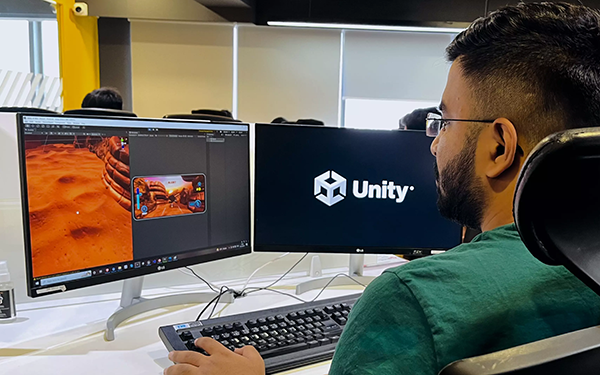
Game development teams are increasingly adopting software engineering practices. This is a result of the expanding role of user experience (UX) in game development. The synergy between software engineering and game development has allowed game developers to increase their efficiency and reduce costs through improved quality assurance, iterative development, cross-platform compatibility, and accessibilty.
Table of Contents
Role of Software Engineering in Game Development
The Significance of User Experience in Game Development
User experience is the sum of all interactions between a user and a product. It includes not only the visual appearance of a game, but also how it feels to play and what kind of emotions it evokes. User experience is often referred to as “UX” for short, and it’s an important factor in determining whether or not players will enjoy your game and if they do enjoy playing it, how much time they’ll spend with it.
As game development teams have started adopting software engineering practices like continuous integration (CI), continuous delivery (CD), and DevOps over the past decade or so, many have also begun implementing UX practices such as usability testing early in development cycles. One approach to ensuring a great user experience is to leverage resources like kevurugames.com. This helps ensure that games are enjoyable from start to finish before being released into production environments where customers can interact directly with them via app stores or social media platforms like Facebook Messenger bots. These integrations seamlessly become a part of our daily lives, without requiring any additional downloads beyond simply logging onto their respective websites. We can enjoy these experiences from the early morning hours to the late hours of the night in our local time zones. So, don’t forget about those important deadlines!
The Synergy of Software Engineering and Game Development
As the two disciplines share a common goal, they are complementary. Game development is all about creating an experience for players and software engineering wants to make sure that experience is as smooth and seamless as possible. The two disciplines can learn from each other in many ways:
The software engineer will understand how to make games more engaging by understanding how people interact with software, while the game developer will have an eye for detail that most developers don’t have because they’re focused on their own projects instead of looking at things holistically.
Designing for User Experience
User experience (UX) is the overall experience a user has with a product. It’s about making sure users can easily and intuitively use your product, whether it’s an app, website or game.
User experience is more than just usability; it also encompasses accessibility, reliability and operability. These are all important factors that contribute to the overall UX of your software engineering project.
User Interface and Interaction Design
User interface (UI) design is about creating a user interface that is both visually appealing and easy to use. It’s also called interaction design, because it involves designing the interaction between users and software applications. Game development teams need to create UIs that are intuitive, responsive, and attractive so that players can easily navigate through menus or levels without getting frustrated by complex interactions or unclear instructions.
Performance Optimization and Game Mechanics
Performance optimization is about making your game run faster, but it’s also about making sure that users don’t experience any lag or stuttering when playing. It’s important to keep this in mind when designing the game mechanics, especially when targeting hyper casual game ideas, because if they are too complicated, they will take up more memory and processing power than necessary. Some things you can do include reducing the number of physics objects in each scene (for example: removing objects that aren’t currently being used), reducing the complexity of AI characters’ movements and animations (for example: using simpler animations) and optimizing textures so that there aren’t too many colors at once on screen at any given time (this may require changing some assets).
All these optimizations help improve gameplay by keeping players engaged longer without causing them frustration or boredom due to performance issues like lag or stuttering!
Testing and Quality Assurance
Testing and quality assurance are both essential parts of software engineering. Testing is the process of evaluating a product or service to detect and correct defects, whereas quality assurance refers to all planned activities intended to ensure that products conform to requirements, standards, and expectations.
Testing can be manual (e.g., testing with your own eyes), automated (e.g., running automated tests), or a combination of both (e.g., manual testing followed by automated testing). The goal of testing is to find bugs before they reach customers so it’s important for developers to test their own code at every stage in development: from idea generation through design implementation until release into production environments where users interact with it daily!
Iterative Development and User Feedback
Iterative development is a software development process that focuses on incremental changes to a product. It helps you to improve the user experience of your game and make it more valuable for players.
In order to iterate effectively, you need feedback from users at each step of the way. This can be qualitative or quantitative in nature for example, asking players what they think about a new feature or mechanic before release is qualitative feedback; measuring how much time users spend playing different levels after release would be quantitative data that informs you about their preferences (and possibly why).
Cross-Platform Compatibility and Accessibility
In today’s global marketplace, cross-platform compatibility is an important consideration for accessibility. Accessibility is a major factor in user experience, which directly affects user retention and acquisition.
A game developed using software engineering processes that prioritize these factors will benefit from higher rates of both retention and acquisition.
Game development teams are increasingly adopting software engineering practices. This is due to the importance of user experience, which can be improved by applying software engineering practices.
One example of a software engineering practice that improves user experience is continuous integration (CI). CI helps you address issues faster by automating testing, building and deploying your code so that you can see if changes break any existing features, before they go live in production.
Conclusion
Game development teams are increasingly adopting software engineering practices. This trend is driven by the need to create high-quality games in a short amount of time, while also ensuring that they’re accessible and playable on various platforms. By adopting software engineering principles, game developers can better manage the complexity of their projects and create experiences that are more engaging for players.

